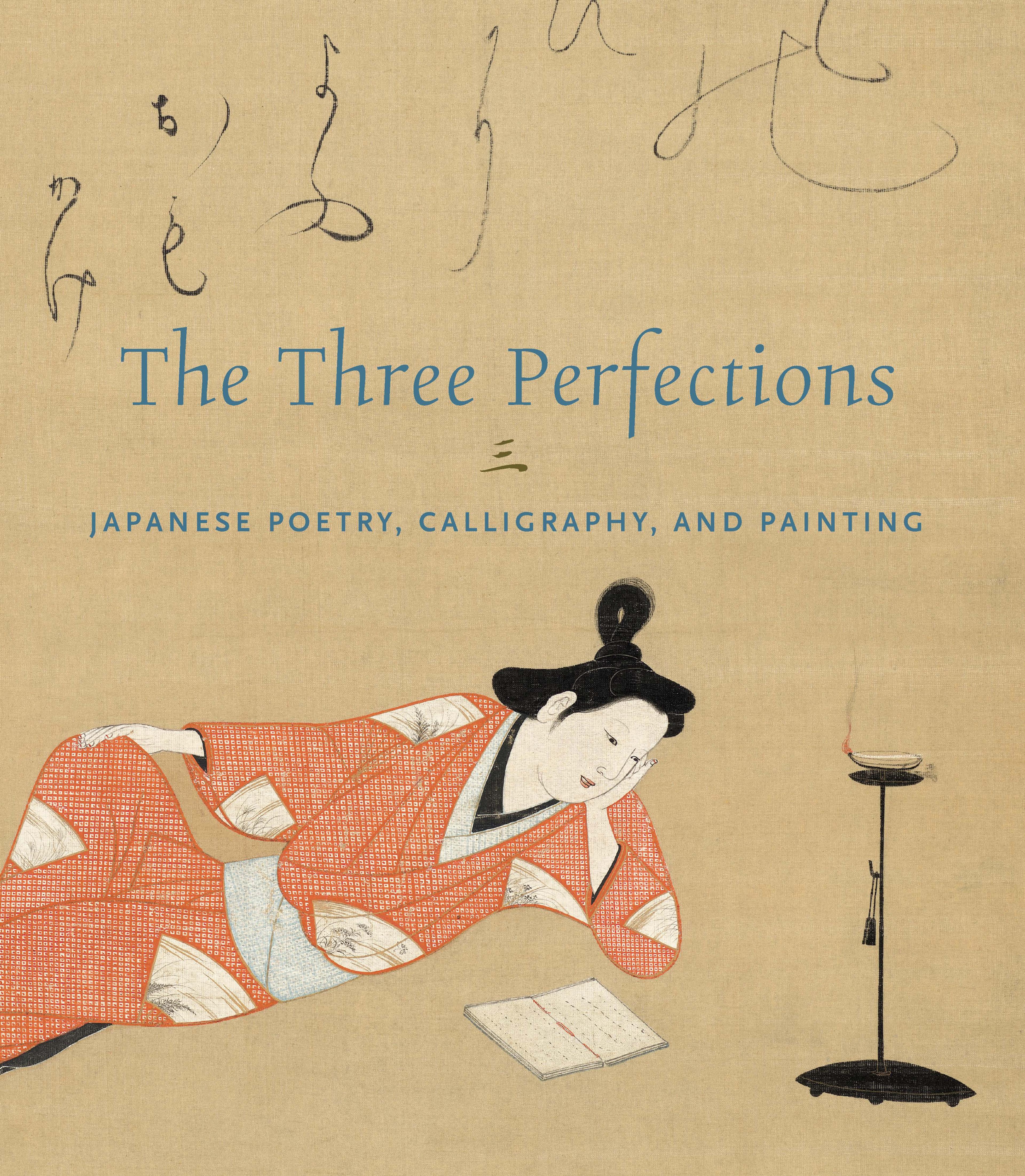A Gatha (Contemplative Verse) by Fu Daishi (497–569)
Three dynamic columns of flowing cursive Chinese characters spell out the philosophy of the seventeenth-century Rinzai master Bankei Yōtaku, who was renowned for advocating a philosophy—informed by Daoism and Zen Buddhism—of what he called the “Unborn.” The inscription here encapsulates the mystical outlook inherent in his spiritual teachings:
物先天地
無形本寂寥
能 爲萬象主
不逐四時凋
Existing even prior
to heaven and earth
without form, silent,
alone by itself,
Its boundless power
controls all creation;
It remains unchanged
as the seasons unfold.
(Trans. John T. Carpenter)
Fu Daishi, the Buddhist Master Fu or Great Teacher Fu, even though a lay practitioner (not a monk) earned the respect as one the great Chinese Buddhist teachers of his times, and was even said to be an incarnation of the Buddha of the future, Maitreya. Emperor Wu of the Liang dynasty, a devout Buddhist, was also a fervent student of his teachings. Fu Daishi also earned acclaim as a philanthropist and, for instance, funded the construction of Shuang-lin-ssu Temple and an attached sutra repository on the premises to house the entire collection of Buddhist scriptures. The repository was distinctive in that it had a revolving stand with eight faces for storing the scriptures, a type of repository that became common in later centuries. Therefore, portraits of him often show him posed near such sutra repositories; he is often also depicted with a laughing face and known in Japan as a Laughing Buddha or warai-botoke.
物先天地
無形本寂寥
能 爲萬象主
不逐四時凋
Existing even prior
to heaven and earth
without form, silent,
alone by itself,
Its boundless power
controls all creation;
It remains unchanged
as the seasons unfold.
(Trans. John T. Carpenter)
Fu Daishi, the Buddhist Master Fu or Great Teacher Fu, even though a lay practitioner (not a monk) earned the respect as one the great Chinese Buddhist teachers of his times, and was even said to be an incarnation of the Buddha of the future, Maitreya. Emperor Wu of the Liang dynasty, a devout Buddhist, was also a fervent student of his teachings. Fu Daishi also earned acclaim as a philanthropist and, for instance, funded the construction of Shuang-lin-ssu Temple and an attached sutra repository on the premises to house the entire collection of Buddhist scriptures. The repository was distinctive in that it had a revolving stand with eight faces for storing the scriptures, a type of repository that became common in later centuries. Therefore, portraits of him often show him posed near such sutra repositories; he is often also depicted with a laughing face and known in Japan as a Laughing Buddha or warai-botoke.
Artwork Details
- 盤珪永琢書 傅大士の偈
- Title:A Gatha (Contemplative Verse) by Fu Daishi (497–569)
- Artist:Bankei Yōtaku (Eitaku) (Japanese, 1622–1693)
- Period:Edo period (1615–1868)
- Date:late 17th century
- Culture:Japan
- Medium:Hanging scroll; ink on paper
- Dimensions:Image: 49 5/8 × 20 3/8 in. (126 × 51.8 cm)
Overall with mounting: 84 1/4 × 21 11/16 in. (214 × 55.1 cm)
Overall with knobs: 84 1/4 × 24 3/16 in. (214 × 61.4 cm) - Classification:Calligraphy
- Credit Line:Mary and Cheney Cowles Collection, Gift of Mary and Cheney Cowles, 2018
- Object Number:2018.853.19
- Curatorial Department: Asian Art
More Artwork
Research Resources
The Met provides unparalleled resources for research and welcomes an international community of students and scholars. The Met's Open Access API is where creators and researchers can connect to the The Met collection. Open Access data and public domain images are available for unrestricted commercial and noncommercial use without permission or fee.
To request images under copyright and other restrictions, please use this Image Request form.
Feedback
We continue to research and examine historical and cultural context for objects in The Met collection. If you have comments or questions about this object record, please contact us using the form below. The Museum looks forward to receiving your comments.
